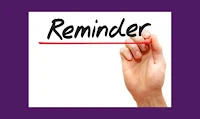Prepositional Phrases
A prepositional phrase includes a preposition, the object of the preposition, and any modifiers of that object.
Common prepositions include to, with, before, off, next to, and in spite of.
EXAMPLES
- In the brightly lit room, Eric and Amy practiced the waltz step. [The prepositional phrase tells where the waltz step was practiced. The phrase begins with the preposition In.]
- The rhythm of waltz music swings along happily. [The prepositional phrase tells which rhythm the sentence describes. The phrase begins with the preposition of.]
REMINDER
A phrase is a group of related words that is used as a single part of speech.
A phrase will not have both a verb and its subject.
A phrase will not have both a verb and its subject.
The object of a preposition may be compound.
EXAMPLE
- The book I’m reading is about an old man and the sea. [Man and sea are objects of the preposition about.]
Adjective Phrases
There are two types of prepositional phrases: adjective phrases and adverb phrases.
Like single-word adjectives, adjective phrases modify nouns or pronouns and often follow the word or words they modify.
Adjective phrases answer the questions What kind(s)? and Which one(s)?
Adjective phrases answer the questions What kind(s)? and Which one(s)?
EXAMPLES
- Micah likes movies about real-life heroes. [The adjective phrase about real-life heroes modifies the noun movies. It tells what kind of movies Micah likes to watch.]
- One movie starred a hero in a red, white, and blue costume with stars. [The adjective phrase with stars modifies costume, telling what kind of costume. The adjective phrase in a red, white, and blue costume tells which one about the noun hero.]
Adverb Phrases
Like single-word adverbs, adverb phrases modify verbs, adjectives, or other adverbs. They answer these questions: How? When? Where? Why? To what extent? How far? How long? More than one adverb phrase may be used to add specific information to a sentence.
EXAMPLES
- Janette sprinkled dried basil into the sauce and stirred it. [The prepositional phrase into the sauce tells where Janette sprinkled the basil. The phrase modifies the verb sprinkled.]
- In her garden, she grows basil from seeds. [The prepositional phrase In her garden tells where the basil grows, and the phrase from seeds tells how the basil is grown. Both phrases modify the verb grows.]
- Which of these ties is most appropriate for the occasion? [The prepositional phrase for the occasion tells how the tie is appropriate. The phrase modifies the adjective appropriate.]
<->
Prepositional Phrases Quiz
Decide whether the underlined prepositional phrase is an adjective phrase or adverb phrase.
FAQs:
Q: What is a prepositional phrase?
A: A prepositional phrase consists of a preposition followed by a noun or pronoun object of the preposition along with any modifiers.
Q: What are some examples of prepositional phrases?
A: Examples of prepositional phrases include "in the house", "after lunch", "throughout the day", "by the sea", and "under the circumstances".
Q: Where do prepositional phrases go in a sentence?
A: Prepositional phrases typically go after the noun or verb they modify or provide more information about. They can act as adjectives or adverbs.
Q: What are compound prepositions?
A: Compound prepositions are made up of more than one word, like "according to", "because of", and "on top of". A compound preposition still counts as one preposition.
Q: Can a prepositional phrase contain other phrases?
A: Yes, prepositional phrases can contain other phrases like noun clauses or verb phrases to make longer modifying phrases.
References
- The Blue Book of Grammar and Punctuation by Jane Straus, 11th edition, Jossey-Bass, 2014.
- English Grammar Demystified by Jim Peterson, 2nd edition, McGraw-Hill Education, 2012.
- Practical English Usage by Michael Swan, 4th edition, Oxford University Press, 2016.
- Garner's Modern English Usage by Bryan A. Garner, 4th edition, Oxford University Press, 2016.
- The Chicago Manual of Style, 17th edition, University of Chicago Press, 2017.


